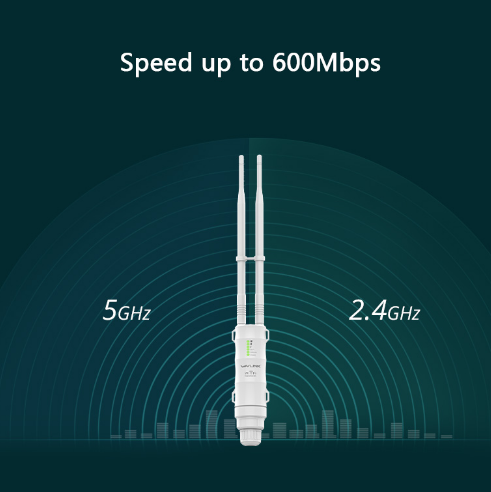The modern smartphone is a marvel of connectivity, capable of keeping us linked to the rest of the world in myriad ways. Chief among them is Wi-Fi, a technology that allows phones to access the internet wirelessly. For those unfamiliar with the process, the question arises: "How do I get Wi-Fi on my phone?" This query encompasses not only the method of connecting to Wi-Fi networks but also understanding the technologies that enhance Wi-Fi coverage, specifically "WiFi Extender vs. Access Point."
Wi-Fi is nearly ubiquitous in many parts of the world, found in homes, businesses, and public spaces. To connect your phone to a Wi-Fi network, you typically go through a simple process: enable Wi-Fi on your device, select the desired network from the list of available options, and enter the password if it is a secured network. Once connected, your phone can communicate with the router to access the internet.
However, the quality of your Wi-Fi connection can vary greatly depending on your location relative to the Wi-Fi router. If the signal is weak or unstable, you may require a device to boost or extend the coverage. This is where the comparison between a WiFi Extender and an Access Point becomes pertinent.
A WiFi Extender, sometimes called a repeater, is a device that takes an existing Wi-Fi signal from a router and rebroadcasts it as a new network. This new network extends the overall coverage area, allowing devices that are further away from the original router to connect to the internet with a stronger signal. While extenders are convenient, they can sometimes reduce the internet speed because they must rebroadcast the signal they receive, which can introduce latency.

An Access Point, on the other hand, is a device that creates a new Wi-Fi hotspot by being hardwired to the router. Unlike extenders, access points can provide better performance and maintain high speeds because they are directly connected to the router. They are particularly useful in large homes or offices where a single router's Wi-Fi signal may not reach all areas effectively.
Deciding between a WiFi Extender and an Access Point is crucial when setting up Wi-Fi in larger spaces or when the signal strength is low. For those interested in exploring these options further, a comprehensive guide can provide a deeper comparison to help in making an informed decision. Understanding the differences between a WiFi Extender vs. Access Point can aid you in choosing the right solution for your Wi-Fi needs.
When setting up Wi-Fi on your phone, it is also important to consider the security of the networks to which you connect. Public Wi-Fi networks, while convenient, can pose security risks. It is advisable to use a virtual private network (VPN) when connecting to public Wi-Fi to protect your data and privacy.
Additionally, modern smartphones are equipped with features that can automatically connect to known networks or even use your location to suggest nearby Wi-Fi networks. These smart connectivity features make it easier to stay connected without the constant need to manually search for and log into Wi-Fi networks.
For those with a limited data plan, Wi-Fi becomes an essential feature, as it allows for the downloading of large files and streaming of high-quality media without incurring data charges. As such, knowing how to connect to and optimize your Wi-Fi connection is key to unleashing the full potential of your smartphone.
Wi-Fi settings can often be customized on your phone to suit your preferences. For example, you can set your phone to automatically turn off Wi-Fi during hours when you typically don't use it or prioritize certain networks over others.
In essence, getting Wi-Fi on your phone is a straightforward process, but ensuring that you have a strong and secure connection may require additional hardware, like extenders or access points, depending on your circumstances. These devices can significantly enhance your Wi-Fi experience, providing the convenience and flexibility to use your phone in more places, with greater reliability and speed. Whether at home, work, or on the go, understanding how to optimize your Wi-Fi connection ensures that you can always stay connected to the digital world.